Overview of flowers similar to lilies

Lilies are one of the most popular and common flowers. Gardeners appreciate this plant for its amazing appearance and a wide variety of colors. Representatives of the Liliaceae family are originally from China. Over the centuries, gardeners have bred new species that have spread across the planet. In the world of flora, there are many flowers that look like lilies. Consider the most famous varieties.
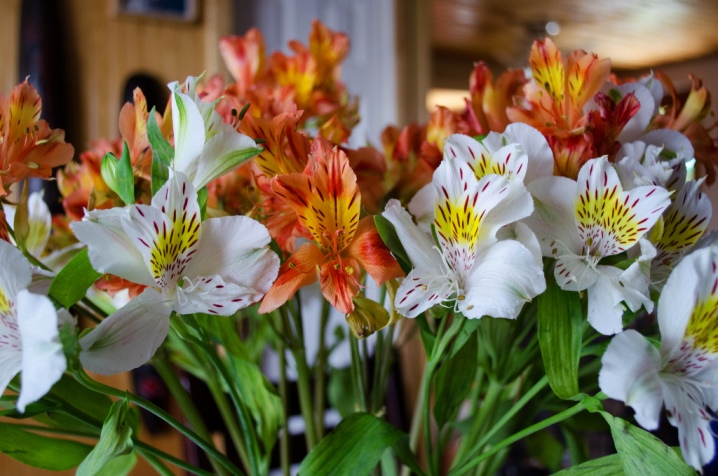
Description of garden plants
It is difficult to imagine a large and lush garden without lilies. When decorating a landscape design or creating a living composition, experts often choose plants whose flowers look like lilies. By combining several varieties, it is possible to achieve an amazing visual effect.
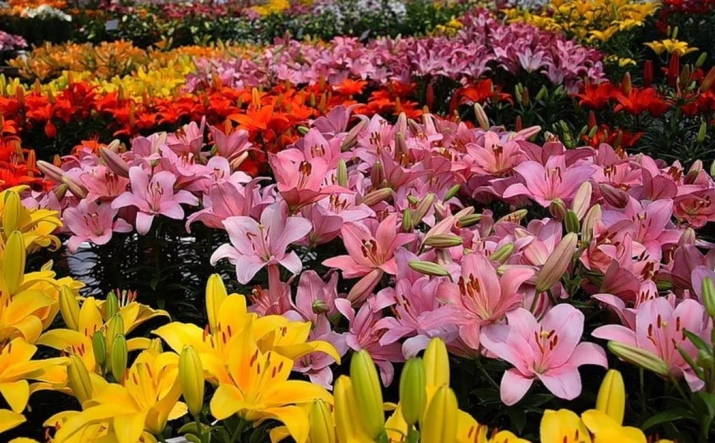

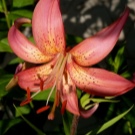



Erythronium (kandyk)
This plant looks like a lily due to elongated and bright petals. The flower belongs to the Liliaceae family. If we translate the name from the ancient Greek language, the word “kandyk” means “red”. The plant is also called "dog canine" due to the special structure of the bulb. Erythronium is native to the subtropics. The bulbs grow deep in the soil. The stems are neat and short. This representative of the flora begins to bloom in early spring.
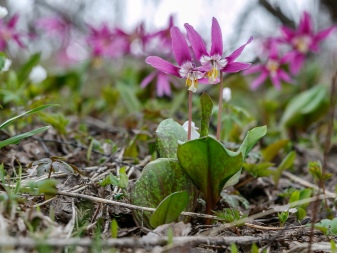
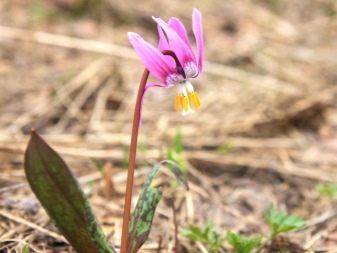
The color of the petals can be different: white, yellow, purple and pink. With the onset of summer, the buds begin to fade. On the territory of Russia, the flower is rare. As a rule, it grows in mountain ranges.
Goose bow
The following herb also belongs to the Liliaceae family. The homeland of the goose is considered to be the northern region of Africa. To date, botanists have managed to identify more than 100 varieties of the flower. The buds on the stems appear early, due to which some gardeners have called it the yellow snowdrop. When the flowering period begins, inflorescences are formed on the plant, consisting of 10 flowers. The color of the petals is rich yellow. Despite the compact size of the buds, the brightness of the flowers attracts attention. On the reverse side, the petals are colored green. Leaves of a standard green herbal color. A perennial representative of the flora grows remarkably in loose and fertile soil. Also, the goose loves a lighted area and does not tolerate stagnant water well.
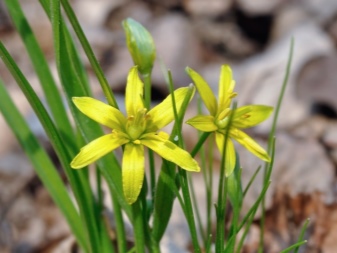
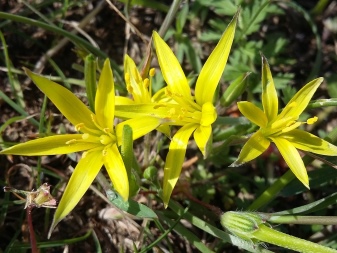
Tricirtis
The next variety captivates with the amazing color of the petals. The homeland of the herbaceous and perennial plant is the East Asian region. In Russia and other CIS countries, the flower can also be found in natural conditions. The inhabitants of the Philippines called him the toad lily. The pleasant scent of the flower attracts the edible species of toads. In Europe, this plant is known as the "garden orchid". Large buds are placed on the stems singly or are collected in small groups. The length of the stems reaches 50 centimeters. The color of the petals is beige, white or yellow.
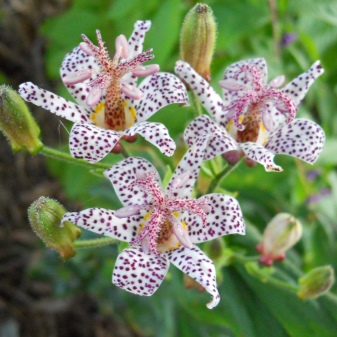

There are also species whose flowers are covered with bright purple spots. Tricyrtis petals are gentle and pleasant to the touch.
Ixiolyrion
The specialists designated the following regions as the birthplace of the Tatar ixiolirion: Siberia, north-western part of China and Central Asia. The plant is identified by its large egg-shaped bulb. The stems are about 40 centimeters long. The leaves are elongated and pointed. The flowers have a charming purple color with a dark blue tint. The appearance of the buds is compared to lilies and bells.The buds appear in the first summer month. The second name of ixiolirion is steppe lily.
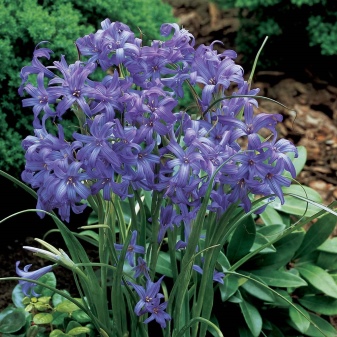
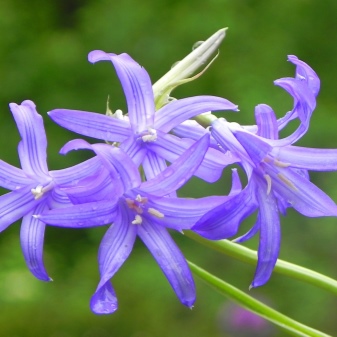
Hesperokallis
This member of the Asparagus family is rare. White charming flowers are placed on a dense stem (maximum height - 50 centimeters). The plant tolerates dry weather remarkably, growing in the territory of the southwestern deserts. Snow-white petals can adorn greenish or silvery stripes. The buds appear after rain. Due to its increased resistance to dry soil and hot climates, the flower was nicknamed the desert lily. The buds open in the evening before sunset and give off a rich scent.

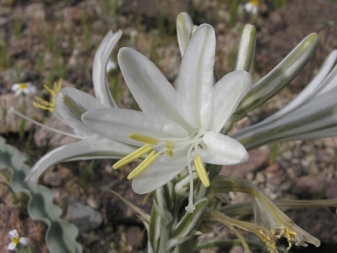
Yellow daylily (hemerocallis)
The homeland of this plant is East Asia. The flower belongs to perennial herbaceous plants, the official name translates as "one-day beauty". Bright yellow buds of amazing beauty delight only 1 day and then fade. On the territory of the CIS countries, flower growers nicknamed this flower the red virgin. In natural conditions, hemerocallis can be found only in the region of Central China. The shape of the fragrant flowers is very similar to the white lily. The shrubs reach a height of 1 meter. The total flowering period of the bushes is 40 days. Peduncles are branched and large in size.
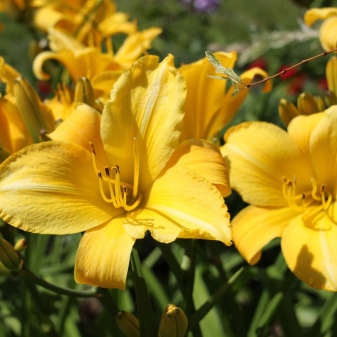

Alstroemeria
Alstroemeria can often be found not only in gardens, but also in flower shops. This variety is a close relative of lilies and belongs to the family of the same name. This species is also known as the Peruvian lily. The native land of the plant is the cold regions of the Andes. The structure of the flower really resembles a lily, only in miniature. This species is presented in a wide variety of colors: white, red, yellow, burgundy, orange and purple buds. In some cases, bicolor plants can be found. On the inside, the petals are decorated with maroon lines. If the flower grows within the boundaries of the Caucasian subtropics, it is able to easily endure the winter without additional insulation or shelter.
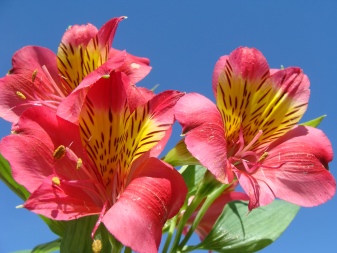

Indoor flowers overview
There are varieties that are great for home cultivation. Some species are smaller than garden and landscaping plants.
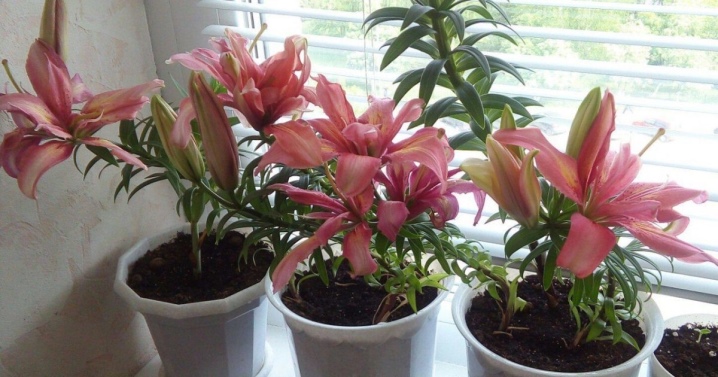
Amaryllis
The plant, originally from southern Africa, is great for growing at home. In Russia, this flower is rare, however, experienced growers are engaged in its cultivation. The height of the flower can reach 70 centimeters. Large half-meter leaves are staggered and have an elongated shape. The shape of the bulb is pear-shaped. When planting, it is partially immersed in the ground.


The flowers consist of 6 large and dense petals. The most common color is scarlet or pink. There are also combined color variations: red-white, white-pink, pink-red. Amaryllis will feel great on the windowsill. In the warm season, it can be taken out on the doorstep or balcony (loggia). Florists who want to grow a flower on their own need to remember that the plant is very sensitive to a drop in temperature. Even a slight stay at the zero mark can negatively affect the state of the flower.
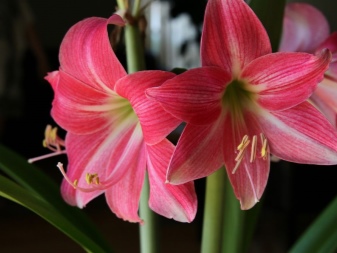
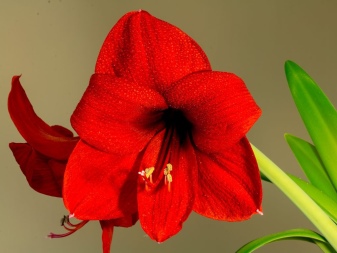
Hippeastrum
This flower is very similar in appearance to the above plant. Many people confuse them, mistaking them for one kind. Hippeastrum belongs to the Amaryllis family. Today this species has about 90 varieties. The name consists of two words, which in translation from the ancient Greek language mean "rider and star". Under natural conditions, the flower can be found in America, in the tropical and subtropical regions. It also grows in the Amazon Basin. In the 16th century, this flower reached Europe.
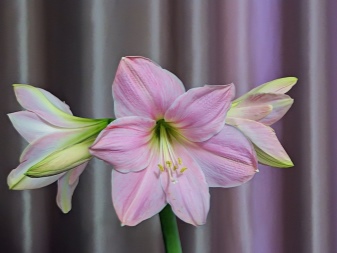
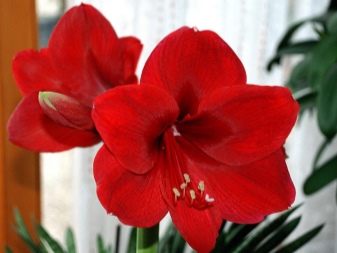
Now the perennial bulbous plant is grown in houses and apartments. In most cases, the bulb is rounded, although conical ones are also found.
Bulb sizes vary from 5 to 10 centimeters, depending on the species. The roots at the bottom are collected in a small bunch. The leaves are thin and elongated, in a rich dark green color. As in the previous species, the plant is characterized by large flowers with an expressive color. Most often, the following colors of buds are found: pink, burgundy, white, orange, scarlet. The seeds have a high germination rate.
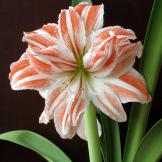

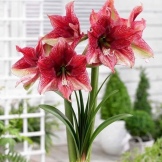
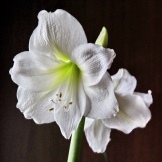
Vallota the beautiful
This species is a close relative of the amaryllis and is in the same family with it. A perennial native to Africa will be an amazing decoration for any room in an apartment. Flowers appear in the second year after planting. Large flowers adorn dense stems. The leaves are narrow and elongated, dark green in color. Experts recommend propagating the flower with the help of children. In the process of growth and development, the vallot forms many children and pleases flower growers with abundant flowering. Due to its unpretentiousness, this plant is perfect for growing at home.
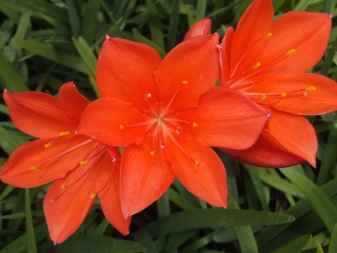
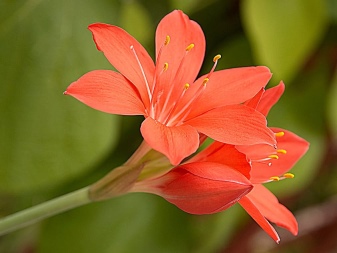
The flower grows wonderfully in a compact pot.
Eucharis
The bulbous plant, which came to us from the Amazon and the Andes, belongs to the Amaryllis family. The perennial flower is also known among gardeners as the Amazonian lily. Snow-white flowers fascinate at first sight. The plant will be a great addition to the interior in a living room. Light color will bring notes of tenderness and lightness to the design. In the center of the flower is a small and bright yellow core.
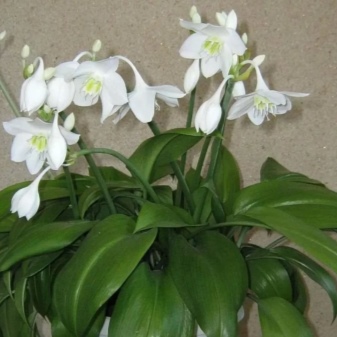
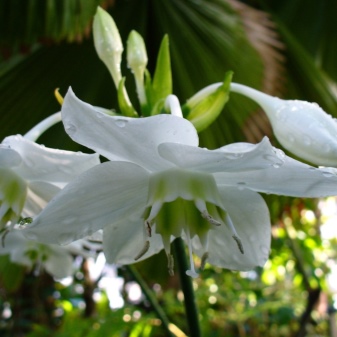
The name of a flower with a pleasant aroma is translated from Greek as "full of charm". Eucharis is widely known in the field of horticulture and floriculture. The flowers are arranged on elongated stems. There are large green leaves underneath. With the alternate opening of the buds, the plant pleases with color for 3 weeks. The first time flowers appear in the period from August to September. In favorable conditions, the buds can grow again (the plant will open with flowers in spring and autumn).
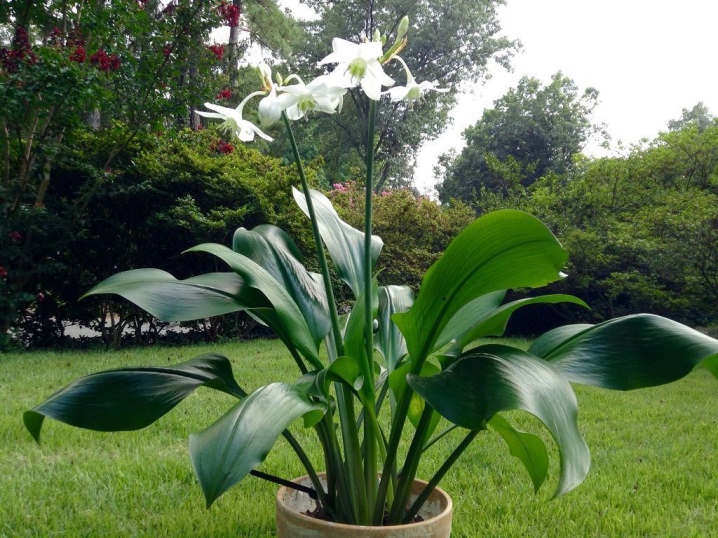
Exotic options
Giant lily (cardiocrinum)
The lily tree is perfect for decorating a charming garden or creating an amazing live composition. Due to the special shape of the leaves, flower growers called the cardiocrinum a heart-shaped lily. They have the special property of changing color throughout the season from rich bronze to olive green. At the end of development, they acquire a dense green color. The plant is characterized by high growth, which can reach 2 meters in height. During the flowering period, dense and strong stems are covered with carpal buds. One stem can house from 5 to 30 massive flowers in a white-green color.

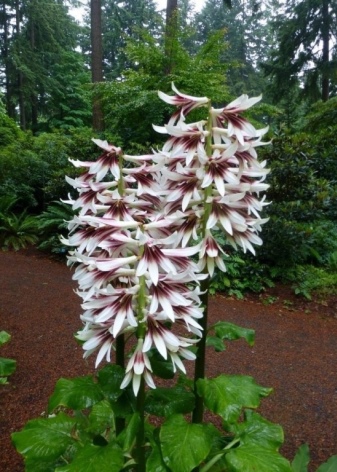
At the end of flowering, the giant lily dies off, and the next season is revived with the help of seeds or daughter bulbs. Due to its large size, the plant is perfect for ennobling park areas, as well as decorating boulevards, squares and other similar locations.
Watsonia
A large exotic plant that comes from the eastern region of Africa belongs to the Iris family. Watsonia is distinguished by tall and pointed green leaves. The branched stems reach a length of 2 meters. The average height is about 1.5 meters. Due to its large growth and numerous buds, the plant has high decorative qualities. Watsonia is perfect for decorating a green area, whether it is a spacious garden, a flower bed or a living arrangement. Flowers of a refined tubular shape are placed at the top of the stems in the amount of several units. There are the following color options: red, hot pink, orange, white. The length of the buds is up to 5 centimeters. Flowering time is the first and second months of summer.
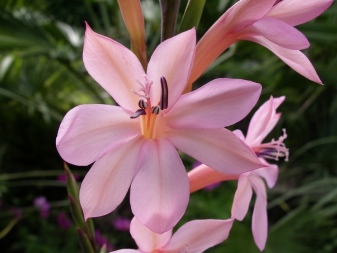
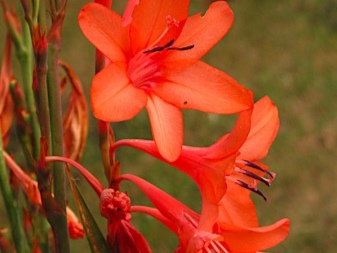
Care advice
For garden plants
Plants thrive in loose and well-drained soil.It is also necessary to maintain a moderate level of humidity. When choosing a location for planting a plant, consider the characteristics of a particular variety. Some flowers prefer lighted areas, others feel better in dark areas. Avoid planting in areas with strong shade, such as under trees. Many varieties grow well near shrubs, they will protect plants from direct sunlight and drafts. When planting seedlings, keep a distance of about 15 centimeters between them.
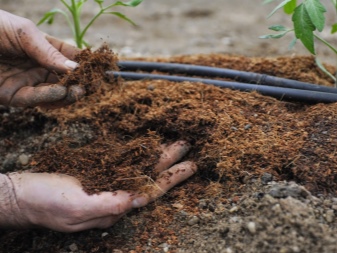
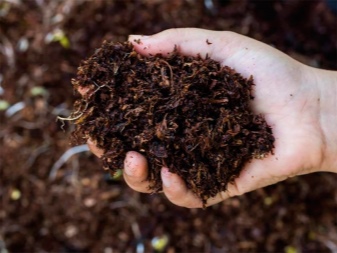
Keep a close eye on climatic conditions and their changes. With the onset of summer, plants and soil should be protected from drying out and overheating. Make sure that direct sunlight does not touch the flowers. Also cover the planting area with a layer of mulch. Sawdust or grass is great. Closer to winter, mulch is removed. Bulbous plants do not tolerate stagnant moisture. When watering, make sure that no water gets on the leaves. Pour it in at the root. Also, do not water during the day when the sun is shining brightly. Moisten the soil as needed when the top layer dries out.
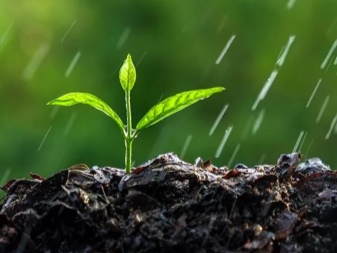
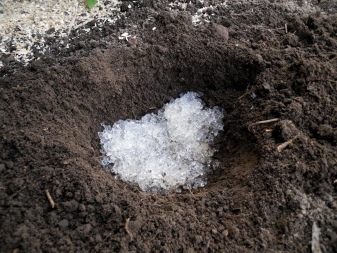
If the region has severe and frosty winters, protect the plants with covering material. Before the flowering period, the plant needs feeding. It is recommended to use ready-made formulations that can be found in gardening stores. At the end of flowering, wilted buds must be removed.
For home flowers
Home-grown plants prefer light and fertile soils that are mixed with river sand. You can prepare the mixture yourself or buy a ready-made substrate at a flower shop. Pots made of various materials are suitable as containers. Be sure to arrange a drainage layer and holes at the bottom of the container through which excess moisture will come out. Use clean or settled water for irrigation. Maintain perfect moisture balance without stagnant water and drying out. During the dry season, you need to periodically spray the flowers. The root system also needs oxygen.
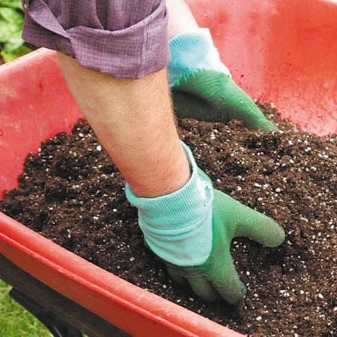
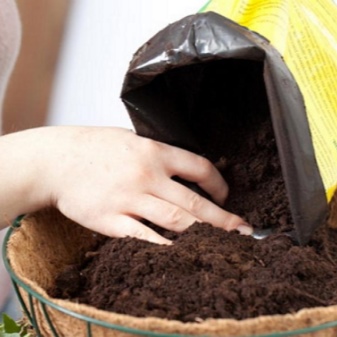
Loosen the top layer of the earth, but carefully so as not to damage the roots and bulb. As with garden plants, protect flowers from direct rays, hypothermia and drafts.
Some varieties are characterized by large and heavy buds. If you notice that the stems have begun to sag under their weight, be sure to use props. It is better to use liquid formulations as fertilizers, which are applied as needed and before flowering (at the stage of bud formation). Plants that live in houses and apartments do not need shelter for the winter, but it is necessary to maintain an optimal temperature for them. Examine flowers carefully for signs of disease and attacks from harmful insects. Use protective drugs and medications if symptoms are present. Follow their directions for use.
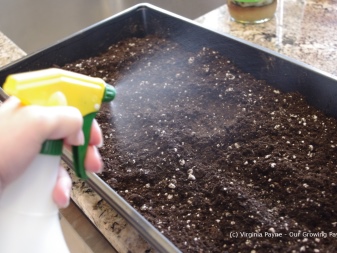

For information on how to choose the right flowers that look like lilies, see the next video.







































































































The comment was sent successfully.